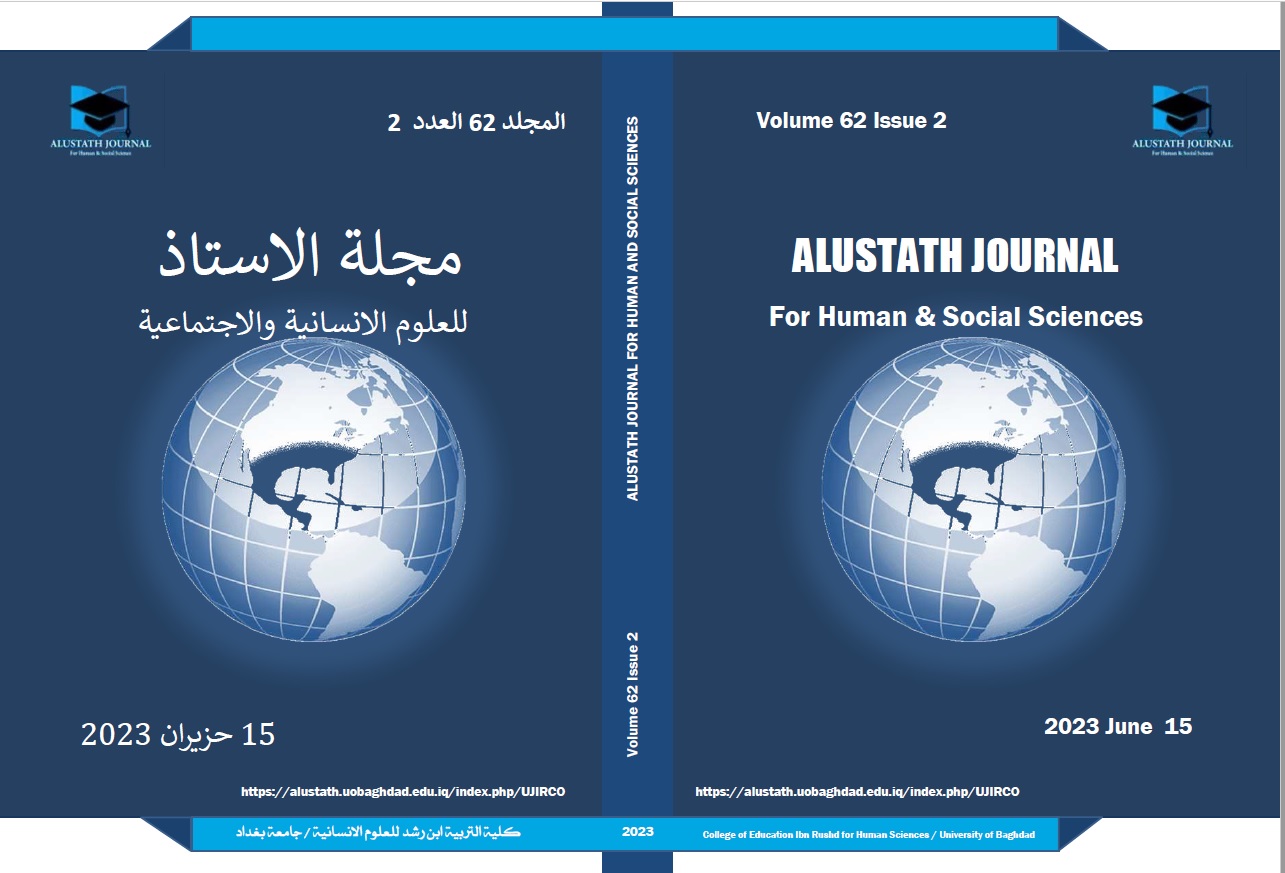استراتيجية الولايات المتحدة الامريكية تجاه العراق ما بين حربي الخليج الاولى والثانية (1988-1991)
DOI:
https://doi.org/10.36473/ujhss.v62i2.2123الكلمات المفتاحية:
استراتيجية، الامريكية، الخليج، حرب العراقالملخص
مما لاشك فيه، ان اسم العراق قد ارتبط بالولايات المتحدة الامريكية وكذلك بإستراتيجيتها في العقود الاخيرة لاسيما خلال حربي الخليج الاولى والثانية وصولاً الى احتلالها له عام 2003، لذلك تحاول هذه الدراسة ان تبحث الاستراتيجية الامريكية تجاه العراق بين هاتين الحربين، للتعرف على حيثيات هذه الاستراتيجية، وأهدافها، فضلاً عن اسباب تحولاتها، والتي استمرت تداعياتها حتى وقتنا الحاضر. وتوصلت الدراسة الى استنتاجات عدة اهمها ان استراتيجية الولايات المتحدة الامريكية تجاه العراق خلال هذه المدة، كانت على شكل سياسة معلنة تمثلت بخداع النظام العراقي في ان الولايات المتحدة دولة داعمة له ابان حرب الخليج الاولى وما بعدها، عبر استمرارها بتزويد جيشه بالأسلحة، والمعدات، والتدريب . وفي الوقت نفسه مارست سياسة غير معلنة تمثلت بتوريط العراق ودفعه الى احتلال الكويت عبر وسائل عدة بهدف تدمير قوته العسكرية والاقتصادية؛ لإبعاده عن تهديد حلفائها ومصالحها في المنطقة اولاً، وكذلك لإعطاء المبرر لها في الدخول بقوة في منطقة الخليج العربي والسيطرة عليها ثانياً، وهو ما حققته حرب الخليج الثانية .
التنزيلات
المراجع
• Abu Ghazaleh, Abdel Halim, 1993 The Iran-Iraq War (Military Documents Series), Dar Al-Nabulsi for Distribution and Publishing, Amman,.
• Ahmed, Ibrahim Mahmoud, 2003. The Iraq War and Shifts in Strategic Thought, International Politics (Magazine), Issue 153.
• Al-Allaf, Ibrahim Khalil, 2005, Iraq's position in the contemporary American strategy, Regional Studies (Journal), Year 2, Issue 4, Center for Regional Studies, Mosul.
• Al-Asadi, Nahida Hussein Ali, 2011. American missionaries in Iraq and the position of the Ottoman state, political and international (magazine), Issue 19.
• Al-Harmozi, Saif Nusrat Tawfiq, 2010, The American war on Iraq, strategic motives and economic dimensions, master's thesis, unpublished, College of Political Science, Al-Nahrain University.
• Al-Jassani, Iyad Helmy, 2007, the occupation of Iraq and the American democratic reform project, facts and illusions, Dar Al-Zahraa, Beirut.
• Al-Nuaimi, Abd al-Rahman Muhammad, 1994, The Struggle Over the Arabian Gulf, 2nd Edition, Dar Al-Kunouz Al-Adabiyah, Beirut.
• Arthur Johnson, 1998. US President George W. Bush’s Foreign Policy in the Middle East, University of Maryland, Maryland.
• Eisenhower, Dwight, 1969, Eisenhower's memoirs, translated by: Hubert Jugman, 1st Edition, Dar Talasim for Distribution and Publishing, Beirut.
• Heikal, Mohamed Hassanein, 1992. The Gulf War (Delusions of Power and Victory), Al-Ahram Center for Translation and Publishing, Cairo.
• Issawi, Charles, The Historical Development of US-Arab Economic Relations, Arab-American Affairs (magazine), translation: Research and Information Center, No. (33), 1983.
• -Michael J. Friedman, 2005. The Foreign Policy of the United States of America in Iraq during the Second Gulf War) and Its Strategic Dimensions, Jamestown Institute of International Studies New York.
• Mustafa, Ahmed Abdel-Rahim, 1978, The United States and the Arab East, a series of cultural books, The World of Knowledge, Ku.
• Olden, Herman and Paul Phillips, 1979, The Fourth Point Program, Waad Umm Wa Eid, translated by: Fajr Ahmed, Dar Al-Fikr Al-Hadith, Baghdad.
• Palmer, Michael, 1995, Guardians of the Gulf, the history of the expansion of the American role in the Arabian Gulf 1833-1992, translated by: Nabil Zaki, 1st Edition, Al-Ahram Center for Translation and Publishing, Amman.
• Sherif, Hussein, August 2001, The United States of America from independence and isolation to world supremacy (1783-2001), Part Three, The Egyptian General Book Organization, Cairo.
• Stephen A. Harvey, 2002, American Strategy and Its Tools in the Middle East Region in the Last Quarter of the Twentieth Century, Virginia Institute for Studies, Virginia.












